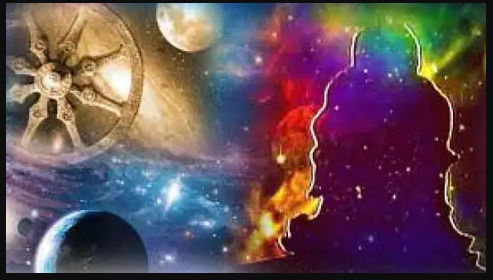Hindu Vedic literatures have divided time into four different ears-Satya Yuga, Treta Yuga, Dvapara Yuga, and Kali Yuga. For gods, these are equivalent to 4000, 3000, 2000, and 1000 years. Mahayuga, which is the period from the beginning of Satya yuga to the end of kali yuga is of 12,000 years including Sandhya, and Sandhyamsha. Find more about the calculation of the transition period in four yugas in Hindu culture here.

To understand how long is one year for the gods, let’s dive into details about the measurement of time in Hindu Vedic literature.
| Time | Explanation |
| Nimesha | The smallest unit of time is a nimesha. That is the length of time it takes to blink one’s eyes. |
| Kashtha | Fifteen nimeshas constitute a kashtha |
| Kala | Thirty kashthas are called a kala |
| Muhurta | Thirty kalas make up one muhurta. There are fifteen muhurtas during the day and fifteen muhurtas during the night. |
| Ahoratra | Thirty muhurtas make up night and day, known as ahoratra. One year for humans is equivalent to one ahoratra for the gods. |
| Uttarayana | The six months during which the gods have their day is called uttarayana |
| Dakshinayana | The six months during which the gods have their night is called dakshinayana |
| Divine year | Three hundred and sixty human years are equivalent to one divine year |
| Mahayuga | Twelve thousand divine years are equivalent to 4,320,000 human years and this is the length of a mahayuga. |
| Manvantara | There are a little over seventy-one mahayugas in manvantara. Seventy-one mahayugas would add up to 296,720,000 human years. There are actually 306,720,000 human years in a manvantara including transition periods. |
| Kalpa | One thousand mahayugas make up one kalpa. There are thus 4,320,000,000 human years in a Kalpa. Equivalently, fourteen manvantara constitute one kalpa. |
A kalpa corresponds to Brahama’s ahoratra. At the end of one of Brahma’s days, the entire universe and all the beings in it are destroyed. Brahma, Vishnu, and Shiva are not however destroyed. There is darkness and water everywhere and Vishnu sleeps on this water. Since nara means water and ayana means resting place. Vishnu is also known as Narayana. When the day dawns, Brahma begins creation afresh.
One thousand kalpas are one year for Brahma and eight thousand such years are one yuga for Brahma. One thousand of Brahma’s yugas are equivalent to one of Vishnu’s days. Nine thousand of Vishnu’s days are equivalent to merely one day for Shiva. This is how Puranas attempted to establish Shiva’s supremacy.
